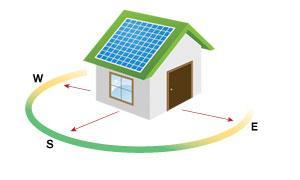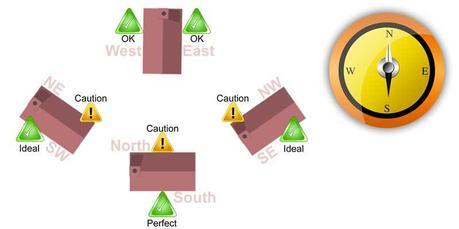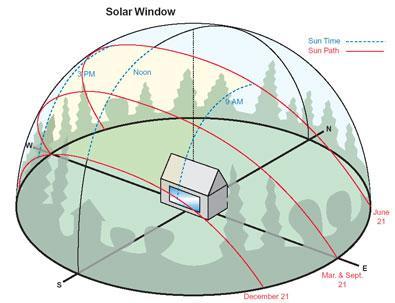 In the northern hemisphere orientation is the main decisive factor that determines the behavior of an installed PV system in terms of efficiency.We elaborately discussed How Solar Systems Work in an earlier update - that the panels absorb the sun's rays and through a series of steps the solar system is able to produce energy in the form of electricity. These PV panels generate more electricity when exposed to greater amounts of sunlight. A South facing installation on a property using the south facing roof or area for ground mounts make the solar system perform better which in turn increases their efficiencies tremendously.
In the northern hemisphere orientation is the main decisive factor that determines the behavior of an installed PV system in terms of efficiency.We elaborately discussed How Solar Systems Work in an earlier update - that the panels absorb the sun's rays and through a series of steps the solar system is able to produce energy in the form of electricity. These PV panels generate more electricity when exposed to greater amounts of sunlight. A South facing installation on a property using the south facing roof or area for ground mounts make the solar system perform better which in turn increases their efficiencies tremendously. An optimal southern exposure is highly ideal for this scenario to work
perfectly. Orienting the panels a few degrees Southeast or Southwest
won't cause much harm as long as its orientated South-something. Note here that solar systems installed on the West or East facing roofs of a building will still produce energy but will be greatly flawed in its efficiency as we will explain later. Some systems installed at 30 degrees off south have recorded good yearly yields, but those installed at 40+ degrees off south have recorded rather very poor yearly yields. In the illustration above, we see acceptable variations in the orientation of the roof and direction of the building with respect to the geographic coordinates.
An optimal southern exposure is highly ideal for this scenario to work
perfectly. Orienting the panels a few degrees Southeast or Southwest
won't cause much harm as long as its orientated South-something. Note here that solar systems installed on the West or East facing roofs of a building will still produce energy but will be greatly flawed in its efficiency as we will explain later. Some systems installed at 30 degrees off south have recorded good yearly yields, but those installed at 40+ degrees off south have recorded rather very poor yearly yields. In the illustration above, we see acceptable variations in the orientation of the roof and direction of the building with respect to the geographic coordinates.  Unless you live with the 'Mars Rover' on mars, you will notice that the sun passes through the sky from day break to sun set using a specific arc (when viewing from Earth!). If you live on the equator and a few degrees North or South, the difference in optimum reception of the sun's photonic rays vary only slightly. But if you live on the Northern hemisphere, you'd notice that in some seasons of the year, the suns height in the sky changes dramatically. During the summer, the sun rises to 60 degrees from the horizon as it moves East to West forming its arc path. In winter, the sun's highest point on the arc is only about 13 degrees from the horizon. This changes what is known as the sun hours and also the angle at which the sun's rays reach the solar panels. This illustration may shed some light on this point.
Unless you live with the 'Mars Rover' on mars, you will notice that the sun passes through the sky from day break to sun set using a specific arc (when viewing from Earth!). If you live on the equator and a few degrees North or South, the difference in optimum reception of the sun's photonic rays vary only slightly. But if you live on the Northern hemisphere, you'd notice that in some seasons of the year, the suns height in the sky changes dramatically. During the summer, the sun rises to 60 degrees from the horizon as it moves East to West forming its arc path. In winter, the sun's highest point on the arc is only about 13 degrees from the horizon. This changes what is known as the sun hours and also the angle at which the sun's rays reach the solar panels. This illustration may shed some light on this point.Please let me know if you have any questions by leaving a comment below.
